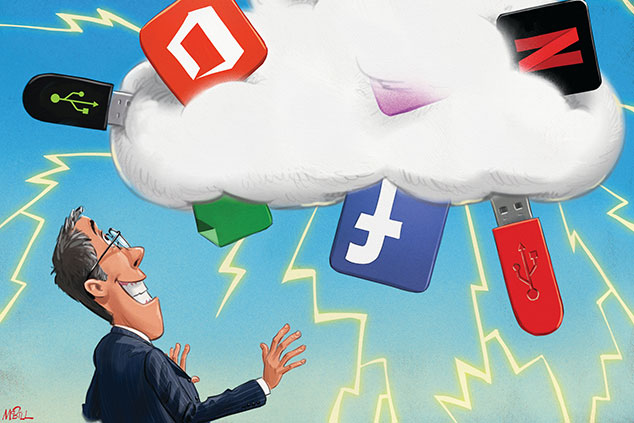
Cloud computing technology helps companies manage their IT more efficiently and will also ensure that the world wide web and key innovations such as artificial intelligence fulfil their potential, says Stephen Connolly.
The concept of cloud computing has emerged from a realisation that there are better ways for the world to manage its information technology. We examine the idea in detail in the box below, but it broadly refers to storing or managing data and delivering IT services on the internet, rather than in-house. It is revolutionising computing and business, and is here to stay. Building cloud platforms and servicing users is big, lucrative work. Tech giant Amazon now makes more money pushing its cloud offering than flogging goods online.
Migrating to the cloud
And yet it’s still early days. Most businesses have just begun the journey to getting on the cloud, according to consultants McKinsey & Co, and there’s a long way to go. Furthermore, plenty have tired, bespoke and cobbled-together IT systems that are well past their sell-by dates. It is so much easier, not to mention more secure, to opt for an up-to-date set-up that someone else organises for you on a cloud platform.
This means that cloud computing is no short-term flash in the pan. It’s a sector set to progress over many years, driven by rising numbers of users and more complex work to help platforms’ corporate customers innovate and reinvent themselves in a fast-paced digital world. Long-term forecasts are wide open, but they range between annual growth of 15% and 30%. Even if expansion came in no higher than the most conservative estimates, committed investors are unlikely to be disappointed.
Of course, merely having cloud platforms and being able to migrate businesses and revamp their IT can’t in itself explain the confident belief that many large and small businesses the world over will make – and pay for – the switch from their current systems. IT can be an early victim of uncertainty and difficult trading conditions, with companies happy to “make do” and bump spending plans into the next financial year and beyond. The current global economic backdrop is volatile and the trade dispute between the US and China is compounding worries.
This could have an impact, but there are compelling practical reasons for cloud migration that are likely to improve the bottom line for businesses. It’s arguable that a weaker economic environment only makes switching to the cloud more of an imperative. Leading cloud provider Amazon showed recently that on average its customers spend $109,718 a year running a standard web application in-house; this drops 76% to $26,786 using Amazon’s cloud. For data processing, the average cost is $927,064 in-house, which halves to $455,593 on the cloud. And an in-house core business application (software used to perform key tasks for the company) sets the average client back $261,353, whereas on Amazon’s cloud it’s only $111,136.
Before looking into the practical benefits in detail, however, it’s first worth considering the bigger picture. Operational advantages are important, but in the case of the cloud when weighing up its significance for the future of computing and business, the whole represents more than the sum of the parts.
Joined-up computing comes of age
The joined-up computing called for by Apple co-founder Steve Jobs in 1997 is here now, increasingly permeating everyday life, as anyone with a smartphone, for example, knows. For Jobs, “carrying around these non-connected computers – with tons of data and state in them – is byzantine”. Others have made similar calls before and since. A large part of the change from then to now is down to the cloud, which allows everything to be connected seamlessly. Widely used companies and services use the cloud to provide their products and interact with customers, including Netflix, Skype, WhatsApp, Microsoft Office, Adobe, Google Docs, Facebook and LinkedIn. It’s significant enough that there are people today who use the term “cloud” interchangeably with “internet”, while others talk only of the former, almost relegating the internet to obscurity.
Either way, plenty of people see the cloud as a kind of “Internet 2.0”. The internet is the infrastructure, while the cloud is the service. It’s like electricity, with the internet being the cables and pylons, and the cloud the power that travels across the network into homes and businesses.
Subscribers can read it in the digital edition or app